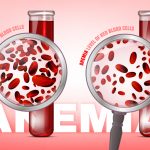Garlic (Allium sativum), is used widely as a flavoring in cooking, but it has also been used as a medicine throughout ancient and modern history; it has been taken to prevent and treat a wide range of conditions and diseases.
Garlic belongs to the genus Allium and is closely related to the onion, rakkyo (an onion found in Asia), scallion, chive, leek, and shallot. It has been used by humans for thousands of years and was used in Ancient Egypt for both culinary purposes and its health and therapeutic benefits.
This article will look at the potential health benefits of garlic and cover any research that supports the claims.
Fast facts on garlic
- In many countries, garlic has been used medicinally for centuries.
- Garlic may have a range of health benefits, both raw and cooked.
- It may have significant antibiotic properties.
History

Garlic has been used all over the world for thousands of years. Records indicate that garlic was in use when the Giza pyramids were built, about 5,000 years ago.
Richard S. Rivlin wrote in the Journal of Nutrition that the ancient Greek physician Hippocrates (circa. 460-370 BC), known today as “the father of Western medicine,” prescribed garlic for a wide range of conditions and illnesses. Hippocrates promoted the use of garlic for treating respiratory problems, parasites, poor digestion, and fatigue.
The original Olympic athletes in Ancient Greece were given garlic – possibly the earliest example of “performance enhancing” agents used in sports.
From Ancient Egypt, garlic spread to the advanced ancient civilizations of the Indus Valley (Pakistan and western India today). From there, it made its way to China.
According to experts at Kew Gardens, England’s royal botanical center of excellence, the people of ancient India valued the therapeutic properties of garlic and also thought it to be an aphrodisiac. The upper classes avoided garlic because they despised its strong odor, while monks, “…widows, adolescents, and those who had taken up a vow or were fasting, could not eat garlic because of its stimulant quality.”
Throughout history in the Middle East, East Asia, and Nepal, garlic has been used to treat bronchitis, hypertension (high blood pressure), TB (tuberculosis), liver disorders, dysentery, flatulence, colic, intestinal worms, rheumatism, diabetes, and fevers.
The French, Spanish, and Portuguese introduced garlic to the New World.
Uses
Currently, garlic is widely used for several conditions linked to the blood system and heart, including atherosclerosis (hardening of the arteries), high cholesterol, heart attack, coronary heart disease, and hypertension.
Garlic is also used today by some people for the prevention of lung cancer, prostate cancer, breast cancer, stomach cancer, rectal cancer, and colon cancer.
It is important to add that only some of these uses are backed by research.
A study published in the journal Food and Chemical Toxicology warned that short-term heating reduces the anti-inflammatory effects of fresh raw garlic extracts. This may be a problem for some people who do not like or cannot tolerate the taste and/or odor of fresh garlic.
Below are examples of some scientific studies published in peer-reviewed academic journals about the therapeutic benefits (or not) of garlic.
Lung cancer risk
People who ate raw garlic at least twice a week during the 7 year study period had a 44 percent lower risk of developing lung cancer, according to a study conducted at the Jiangsu Provincial Center for Disease Control and Prevention in China.
The researchers, who published their study in the journal Cancer Prevention Research, carried out face-to-face interviews with 1,424 lung cancer patients and 4,543 healthy individuals. They were asked about their diet and lifestyle, including questions on smoking and how often they ate garlic.
The study authors wrote: “Protective association between intake of raw garlic and lung cancer has been observed with a dose-response pattern, suggesting that garlic may potentially serve as a chemo-preventive agent for lung cancer.”
Brain cancer
Organo-sulfur compounds found in garlic have been identified as effective in destroying the cells in glioblastomas, a type of deadly brain tumor.
Scientists at the Medical University of South Carolina reported in the journal Cancer that three pure organo-sulfur compounds from garlic – DAS, DADS, and DATS – “demonstrated efficacy in eradicating brain cancer cells, but DATS proved to be the most effective.”
Co-author, Ray Swapan, Ph.D., said “This research highlights the great promise of plant-originated compounds as natural medicine for controlling the malignant growth of human brain tumor cells. More studies are needed in animal models of brain tumors before application of this therapeutic strategy to brain tumor patients.”
Hip osteoarthritis
Women whose diets were rich in allium vegetables had lower levels of osteoarthritis, a team at King’s College London and the University of East Anglia, both in England, reported in the journal BMC Musculoskeletal Disorders. Examples of allium vegetables include garlic, leeks, shallots, onions, and rakkyo.
The study authors said their findings not only highlighted the possible impact of diet on osteoarthritis outcomes but also demonstrated the potential for using compounds that exist in garlic to develop treatments for the condition.
The long-term study, involving more than 1,000 healthy female twins, found that those whose dietary habits included plenty of fruit and vegetables, “particularly alliums such as garlic,” had fewer signs of early osteoarthritis in the hip joint.
Potentially a powerful antibiotic
Diallyl sulfide, a compound in garlic, was 100 times more effective than two popular antibiotics in fighting the Campylobacter bacterium, according to a study published in the Journal of Antimicrobial Chemotherapy.
The Campylobacter bacterium is one of the most common causes of intestinal infections.
Senior author, Dr. Xiaonan Lu, from Washington State University, said, “This work is very exciting to me because it shows that this compound has the potential to reduce disease-causing bacteria in the environment and in our food supply.”
Heart protection

Diallyl trisulfide, a component of garlic oil, helps protect the heart during cardiac surgery and after a heart attack, researchers at Emory University School of Medicine found. They also believe diallyl trisulfide could be used as a treatment for heart failure.
Hydrogen sulfide gas has been shown to protect the heart from damage.
However, it is a volatile compound and difficult to deliver as therapy.
Because of this, the scientists decided to focus on diallyl trisulfide, a garlic oil component, as a safer way to deliver the benefits of hydrogen sulfide to the heart.
In experiments using laboratory mice, the team found that, after a heart attack, the mice that had received diallyl sulfide had 61 percent less heart damage in the area at risk, compared with the untreated mice.
In another study, published in the Journal of Agricultural and Food Chemistry, scientists found that garlic oil may help protect diabetes patients from cardiomyopathy.
Cardiomyopathy is the leading cause of death among diabetes patients. It is a chronic disease of the myocardium (heart muscle), which is abnormally thickened, enlarged, and/or stiffened.
The team fed diabetic laboratory rats either garlic oil or corn oil. Those fed garlic oil experienced significantly more changes associated with protection against heart damage, compared with the animals that were fed corn oil.
The study authors wrote, “In conclusion, garlic oil possesses significant potential for protecting hearts from diabetes-induced cardiomyopathy.”
Human studies will need to be performed to confirm the results of this study.
High cholesterol and high blood pressure
Researchers at Ankara University investigated the effects of garlic extract supplementation on the blood lipid (fat) profile of patients with high blood cholesterol. Their study was published in the Journal of Nutritional Biochemistry.
The study involved 23 volunteers, all with high cholesterol; 13 of them also had high blood pressure. They were divided into two groups:
- The high-cholesterol normotensive group (normal blood pressure).
- The high-cholesterol hypertensive group (high blood pressure).
They took garlic extract supplements for 4 months and were regularly checked for blood lipid parameters, as well as kidney and liver function.
At the end of the 4 months, the researchers concluded “…garlic extract supplementation improves blood lipid profile, strengthens blood antioxidant potential, and causes significant reductions in systolic and diastolic blood pressures. It also leads to a decrease in the level of oxidation product (MDA) in the blood samples, which demonstrates reduced oxidation reactions in the body.”
In other words, the garlic extract supplements reduced high cholesterol levels, and also blood pressure in the patients with hypertension. The scientists added that theirs was a small study – more work needs to be carried out.
Prostate cancer
Doctors at the Department of Urology, China-Japan Friendship Hospital, Beijing, China, carried out a study evaluating the relationship between Allium vegetable consumption and prostate cancer risk.
They gathered and analyzed published studies up to May 2013 and reported their findings in the Asian Pacific Journal of Cancer Prevention.
The study authors concluded, “Allium vegetables, especially garlic intake, are related to a decreased risk of prostate cancer.”
The team also commented that because there are not many relevant studies, further well-designed prospective studies should be carried out to confirm their findings.
Alcohol-induced liver injury
Alcohol-induced liver injury is caused by the long-term over-consumption of alcoholic beverages.
Scientists at the Institute of Toxicology, School of Public Health, Shandong University, China, wanted to determine whether diallyl disulfide (DADS), a garlic-derived organosulfur compound, might have protective effects against ethanol-induced oxidative stress.
Their study was published in Biochimica et Biophysica Acta.
The researchers concluded that DADS might help protect against ethanol-induced liver injury.
Preterm (premature) delivery
Microbial infections during pregnancy raise a woman’s risk of preterm delivery. Scientists at the Division of Epidemiology, Norwegian Institute of Public Health, studied what impact foods might have on antimicrobial infections and preterm delivery risk.
The study and its findings were published in the Journal of Nutrition.
Ronny Myhre and colleagues concentrated on the effects of Alliums and dried fruits, because a literature search had identified these two foods as showing the greatest promise for reducing preterm delivery risk.
The team investigated the intake of dried fruit and Alliums among 18,888 women in the Norwegian Mother and Child Cohort, of whom 5 percent (950) underwent spontaneous PTD (preterm delivery).
The study authors concluded, “Intake of food with antimicrobial and prebiotic compounds may be of importance to reduce the risk of spontaneous PTD. In particular, garlic was associated with overall lower risk of spontaneous PTD.”
Garlic and the common cold
A team of researchers from St. Joseph Family Medicine Residency, Indiana, carried out a study titled “Treatment of the Common Cold in Children and Adults,” published in American Family Physician.
They reported that “Prophylactic use of garlic may decrease the frequency of colds in adults, but has no effect on duration of symptoms.” Prophylactic use means using it regularly to prevent disease.
Though there is some research to suggest that raw garlic has the most benefits, other studies have looked at overall allium intake, both raw and cooked, and have found benefits. Therefore, you can enjoy garlic in a variety of ways to reap its advantages.
Source: https://www.medicalnewstoday.com/articles/265853#benefits






